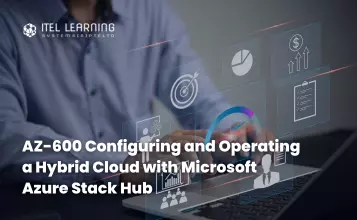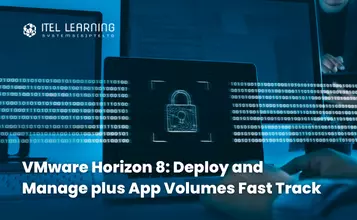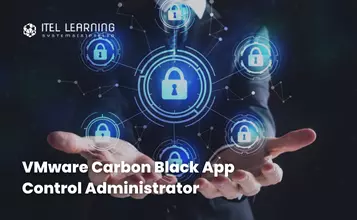Overview
This course teaches Azure administrators and Azure Stack Hub operators how to plan, deploy, package, update, and maintain the Azure Stack Hub infrastructure. Lessons include deploying Azure Stack Hub, managing the Azure Stack Hub Marketplace, offering App Services and Event Hub resource providers, managing Azure Stack Hub registration, and maintaining system health.
This course outlines how decisions in each theses area affects an overall solution. Students will learn through a mix of live demonstrations and hands-on lab activities. This course assumes a working knowledge of Azure and familiarity with virtualization, networking, and identity management. Students are expected to have used the tools common to within Azure environment, such as the Cloud Shell and Resource Explorer.
Prerequisites
Successful Azure Stack Hub students have prior experience with operating systems, virtualization, cloud infrastructure, storage structures, and networking:
- Understanding of on-premises virtualization technologies, including VMs and virtual networking
- Understanding of network configuration, including TCP/IP, Domain Name System (DNS), virtual private networks (VPNs), firewalls, and encryption technologies
- Understanding of Active Directory concepts, including domains, forests, and domain controllers
Who Should Attend?
Course Outline
- What is Azure Stack Hub
- Compare Azure Stack Hub, Azure Stack HCI, and Azure Stack Edge
- Integrate hybrid cloud consistency
- Azure Stack Hub systems
- How is Azure Stack Hub managed?
- Resource providers for Azure Stack Hub
- Overview of Azure Stack Hub Marketplace
- Download Marketplace items to Azure Stack Hub
- Populate Azure Stack Hub Marketplace in a disconnected environment
- Import and publish to Azure Stack Hub Marketplace using PowerShell
- Add and remove a custom virtual machine image to Azure Stack Hub
- Create a custom Azure Stack Hub Marketplace item
- Publish a custom Azure Stack Hub Marketplace item
- Azure Stack Hub Marketplace frequently asked questions
- Azure App Service on Azure Stack Hub overview
- Plan an App Services resource provider deployment
- Deploy an App Services resource provider
- Update an App Services resource provider
- Scale roles based on capacity requirements
- Rotate App Services secretes and certificates
- Plan an Event Hubs resource provider deployment
- Deploy an Event Hubs resource provider
- Update an Event Hubs resource provider
- Rotate Event Hubs secrets and certificates
- Usage and billing
- Select a billing model
- Set up usage data reporting
- View and retrieve usage data
- Usage and billing in multitenant and Cloud Solution Provider scenarios
- Add a tenant for usage and billing
- Usage reporting infrastructure for Cloud Solution Providers
- Azure Stack Hub usage and billing frequently asked questions
- Deployment worksheet for Azure Stack Hub integrated systems
- Recommend a name resolution strategy
- Recommend a public and internal IP strategy
- Recommend a data center firewall integration strategy
- Border connectivity for Azure Stack Hub
- Recommend an identity provider
- Validate identity provider integration
- Configure the Time Server (NTP)
- Recommend certificate strategy
- Validate certificates
- Run secret rotation PowerShell cmdlet for external certificates
- Register in a connected environment
- Verify Azure Stack Hub registration
- Update registration
- Registration using PowerShell
- Configure multi-tenancy in Azure Stack Hub
- Configure Azure Stack Hub guest directory
- Direct users to sign in
- Disable multi-tenancy
- Update guest tenant directory
- Azure Stack Hub and Hybrid Identity
- Identify an appropriate method for access (service principal, users, groups)
- Authentication and authorization
- Provision a service principal for Azure Stack Hub
- Create a service principal that uses a certificate credential
- Create a service principal that uses client secret credentials
- Recommend a permission model
- Set access permissions using role-based access control
- Add a new Azure Stack Hub user account in AAD
- Create an Azure custom role using Azure PowerShell
- Monitor health and alerts in Azure Stack Hub
- Integrate external monitoring with Azure Stack Hub
- Azure Stack Hub Operator Access Workstation
- Monitor system health by using Syslog Server
- Manage field replacement or repair
- Configure automatic diagnostic log collection
- Find your Cloud ID
- Collect diagnostic logs on demand by using PowerShell
- Send Azure Stack Hub diagnostic logs by using the privileged endpoint
- Azure Monitor on Azure Stack Hub
- Overview of Azure Monitor on Azure Stack Hub
- Consume monitoring data from Azure Stack Hub
- Manage compute capacity
- Manage partitioned GPUs
- Add nodes
- Manage storage capacity
- Add IP pools
- Update Azure Stack Hub
- Download and import update packages manually
- Prepare for Azure Stack Hub updates
- Update Azure AD Home Director
- Apply Azure Stack Hub OEM updates
- Azure Stack Hub update activity checklist
- Monitor updates with PowerShell in Azure Stack Hub
- Connect to a privileged endpoint
- Configure the cloud admin user role
- Unlock a support session
- Close the session on the privileged endpoint
- Stop and start Azure Stack Hub
- Perform system diagnostics by using Test-AzureStack
- Recommend a business continuity disaster recovery (BCDR) strategy
- Recommend a strategy for infrastructure backups
- Enable backup for Azure Stack Hub
- Enable backup for Azure Stack Hub with PowerShell
- Back up Azure Stack Hub
- Validate backup using the Azure Stack Development Kit
- Back up storage accounts on Azure Stack Hub
- Azure Stack Hub quotas, plans, offers, and subscriptions
- Create a plan
- Create an add-on plan
- Create and manage offers
- Delegate offers
- Create user subscriptions
- Manage subscriptions, plans, and offers using PowerShell
- Change user subscription owner
- Get started with PowerShell in Azure Stack Hub
- Working with PowerShell in Azure Stack Hub
- Connect to Azure Stack Hub with PowerShell as a user
- Running Azure in your datacenter
- Capacity planning considerations
- Choose an identity provider
- Connection models
- Licensing model
- Naming decisions
- Certificate requirements
- Connect Azure Stack Hub to Azure
- Hybrid connectivity options
- Using ExpressRoute
- External monitoring
- Back up and disaster recovery








